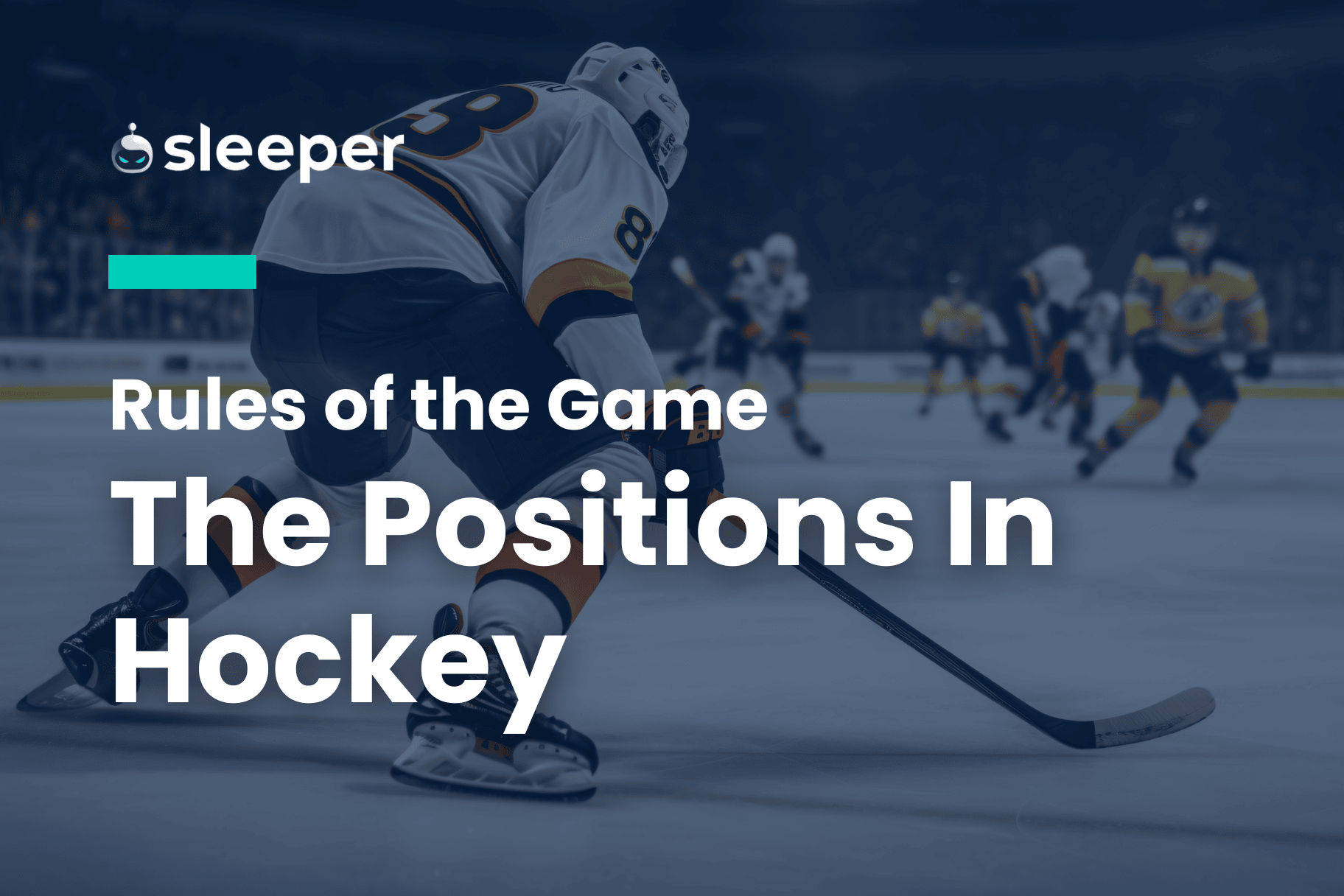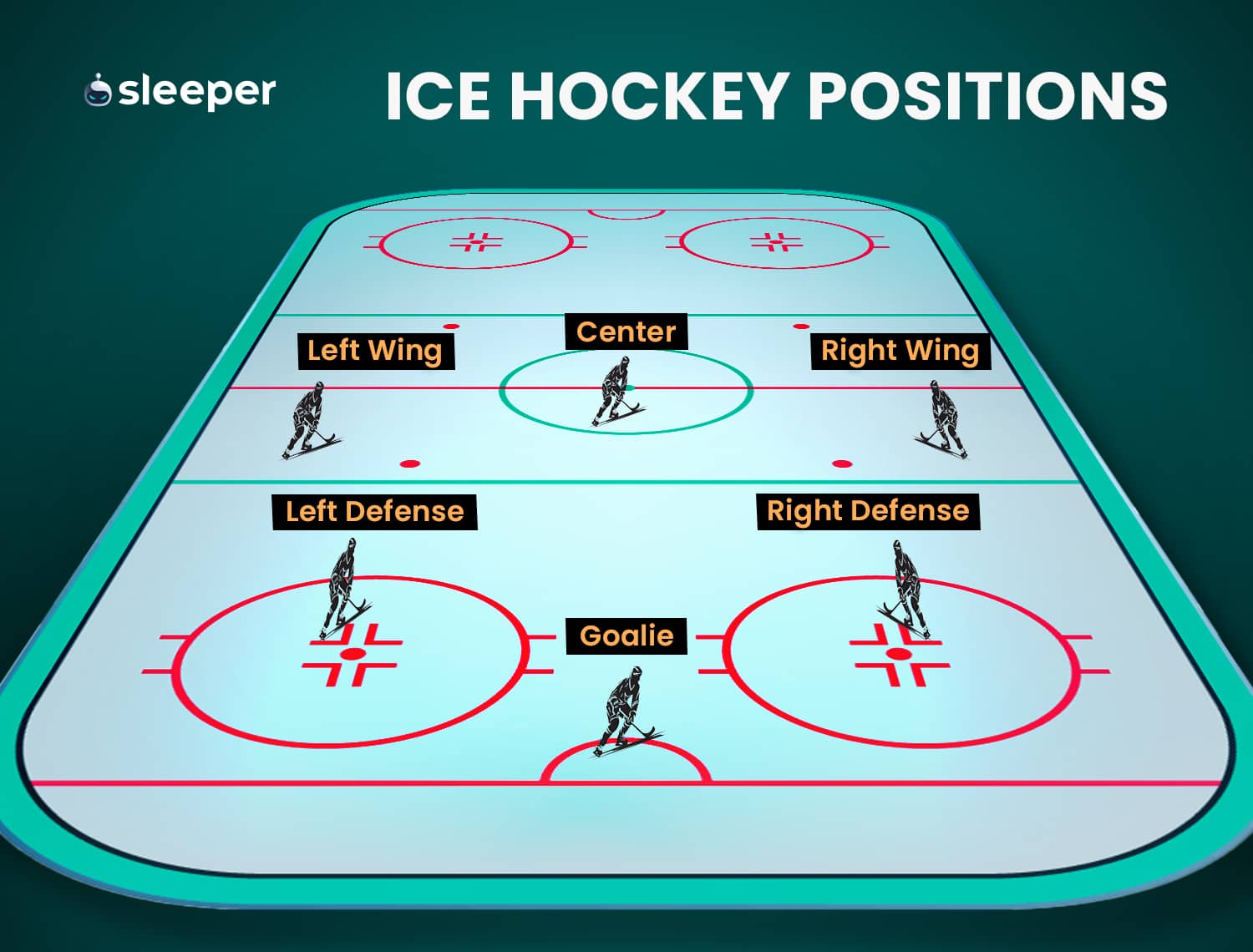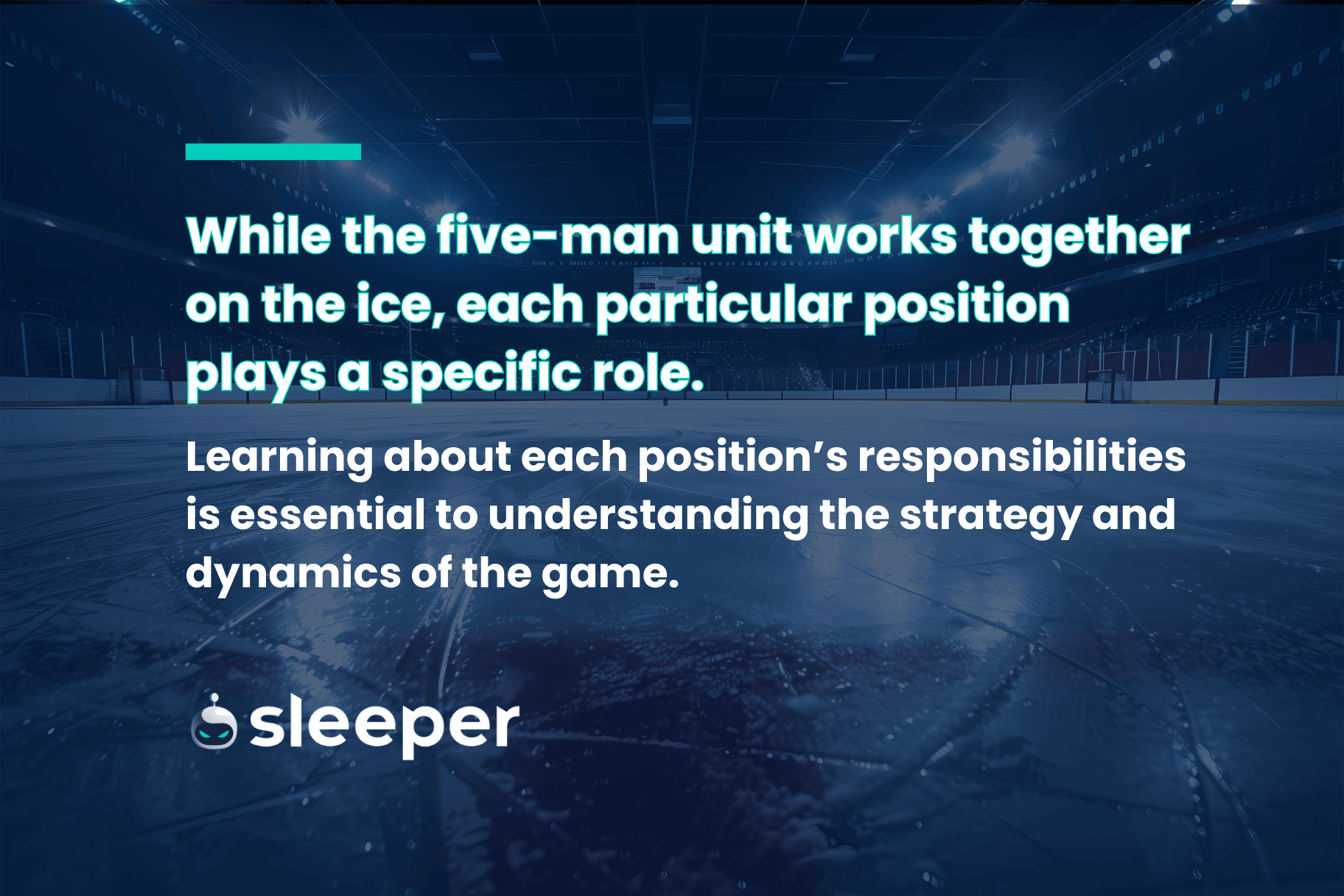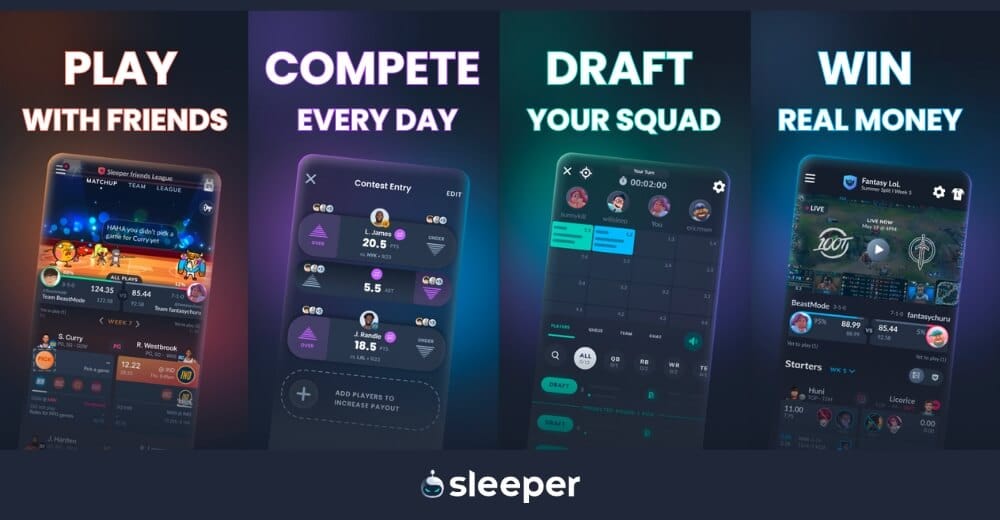The center, wingers, defensemen and goaltender have different responsibilities as they work toward a common goal.

If you're a hockey fan, you should understand each player's role better to enjoy the game more. If you're a fantasy hockey player, you might be looking for tips to improve your team by optimizing lineups and making intelligent decisions based on positions.
Whether to ensure your fantasy team is poised for victory or just brush up on your hockey knowledge, this article is for you. We’ll explore all the ice hockey positions on the rink, detailing their specific roles and responsibilities.
What Is the Role of Each Position in Hockey?
An ice hockey team comprises six players, five of whom are on the ice and one of whom is the goaltender. The five players on the ice are usually referred to as skaters with the goaltender sometimes shortened to goalie, tender or netminder.
There are three forwards and two defensemen on the ice for a hockey team. The forwards include a center and two wingers — a left wing and a right wing — and there are two defensemen: a left defenseman and a right defenseman.
While the five-man unit works together on the ice, each particular position plays a specific role. Learning about each position’s responsibilities is essential to understanding the strategy and dynamics of the game.

All the Positions in Ice Hockey Explained
Center
The center is the most important position among hockey forwards. This player typically takes the faceoff to start play and gain possession, and is expected to contribute at both ends of the ice.
There are more offensive centers and centers that boast strong defensive skills, but the best at the position are usually effective as two-way players.
The centers are relied upon to both lead the scoring attack by distributing the puck as well as getting back on defense to prevent an odd-man rush the other way.
Some of the best offensive centers in the NHL today are Connor McDavid and Nathan MacKinnon, with Aleksander Barkov being one of the best two-way centers in the league. Wayne Gretzky, Mark Messier, and Joe Sakic are three of the best centers of all-time.
Left Wing and Right Wing
The other two forwards are wingers with a left wing and a right wing. These wingers have similar responsibilities but one may be more offensive or defensive depending on a team’s system. All in all, a winger’s primary job is to generate offense with less defensive responsibility than the center.
As their names suggest, the left wing plays on the left side of the ice with the right wing on the right side. However, positions in hockey are rather fluid which may result in the wingers swapping sides depending on the play and situation.
Wingers may have less defensive responsibility but they still must have some acumen to prevent the other team from generating offense in their own zone. They are the forwards who typically leave the zone early once their team has possession of the puck.
This allows wingers to rack up goals and assists. Nikita Kucherov, Artemi Panarin, and David Pastrnak are three of the best wingers in the NHL today. Gordie Howe, Jaromir Jagr, and Teemu Selanne are among the best wingers of all-time.
Left Defense and Right Defense
These two skaters, the left defenseman and the right defenseman, are primarily tasked with, you guessed it, defending. Defensemen can also be called d-men or blueliners as they’re typically stationed on the blue line in the offensive zone.
There are very few, if any, differences between the left defenseman and right defenseman. Typically, a left-handed defenseman will play on the left side and a right-handed d-man will play on the right.
When a left-handed defenseman plays on the right side, or vice versa, it is said that they’re playing on their “weak side” as opposed to their strong side.
As with the forwards, defensemen are also asked to contribute offensively. There are some defensemen that are more offensively focused while defensively-focused defensemen are referred to as “stay-at-home” defensemen.
Some of the best defensemen in the NHL are Quinn Hughes, Cale Makar, Roman Josi, and Victor Hedman. Bobby Orr is regarded as the best defenseman of all-time with Nicklas Lidstrom and Paul Coffey joining him in the top five.
Goaltender (Or Goalie)
One of the most important positions on the ice is the goaltender or goalie. The goaltender patrols the crease and is in charge of, well, tending the goal.
A good goaltender is essential to success in ice hockey where, unlike in soccer (football), they see dozens of shots on goal, and plenty more shot attempts, throughout the game.
To put it simply, the goaltender’s job is to keep the other team from scoring by keeping the puck out of the net. The opposition will attempt to hinder the goaltender’s ability to do their job by blocking the goalie’s vision or passing the puck into a more favorable scoring area.
Each team starts one goalie but carries one on the bench as well. It’s unusual for a team to use two goalies in one game, but a coach may change goaltenders due to a poor performance or to try to spark his team.
Connor Hellebuyck, Sergei Bobrovsky, Thatcher Demko, and Jeremy Swayman are currently a few of the best NHL goaltenders. Martin Brodeur, Patrick Roy, and Dominik Hasek are a trio of all-time great goalies.

Hockey Positions: Frequently Asked Questions
Can a Player Switch Positions During a Hockey Game?
There are no rules against a player changing positions during a hockey game. While it’s rare, a coach could decide to use a player as both a forward and defenseman in a game. It’s much more common for a forward to play different specific positions throughout a game.
While each position has a specific role and ideal positioning, players will have to cover for one another regularly throughout the game. A defenseman may skate deep into the offensive zone, resulting in a forward dropping back for them. Wingers and centers can also criss-cross throughout the ice and may not always be on the left or right side.
Do Teams Always Have 5 Skaters on the Ice?
A team almost always has three forwards (a center and two wingers) and two defensemen on the ice along with their goaltender. However, there are some instances in which a team uses four forwards and one defenseman.
That usually occurs when the team has a power play — a 5-on-4 or 5-on-3 advantage. A power play gives a team more offensive chances and therefore a coach may want to put his best offensive players on the ice.
You will sometimes see a team with six skaters and no goalie on the ice. This typically occurs when a team is losing by a goal or two late in a game. There is no penalty for losing by more than one or two, so adding an extra skater gives the losing team a better chance of scoring a goal.
How Many Players Are There on a Hockey Team?
While there are different rules at different levels, an NHL hockey team can have a maximum of 23 players on their playing roster. Each team must have at least 20 players comprising 18 skaters and two goaltenders.
A team typically has four forward lines (a left wing, center, and right wing) and three defensive pairs, along with their starting goalie and backup goalie. Teams will sometimes opt to play 11 forwards and seven defensemen depending on the situation.
Due to the fast-paced nature of ice hockey, players typically have short shifts with on-the-fly changes. Teams must have strong depth with multiple lines and pairs working together toward a common goal.
Wrapping Up
Ice hockey is one of the most popular sports around the globe. Although it may not seem that way, most European countries have their own hockey league system, and it’s popular in North America, particularly in Canada.
Hockey can be just as fun to play as to watch. For hockey enthusiasts who prefer to stay on the sidelines, fantasy hockey is the perfect hobby. Fantasy hockey allows you to manage a team to victory through strategic decisions about player positions. Whether you’re a seasoned fan or new to the game, we have the right information to help you dominate your fantasy hockey drafts.
Make sure to stay up to date with the latest news and hockey results on Sleeper. You can sign up on our website or download the Sleeper app.




